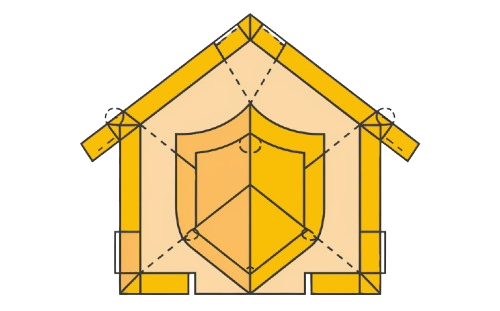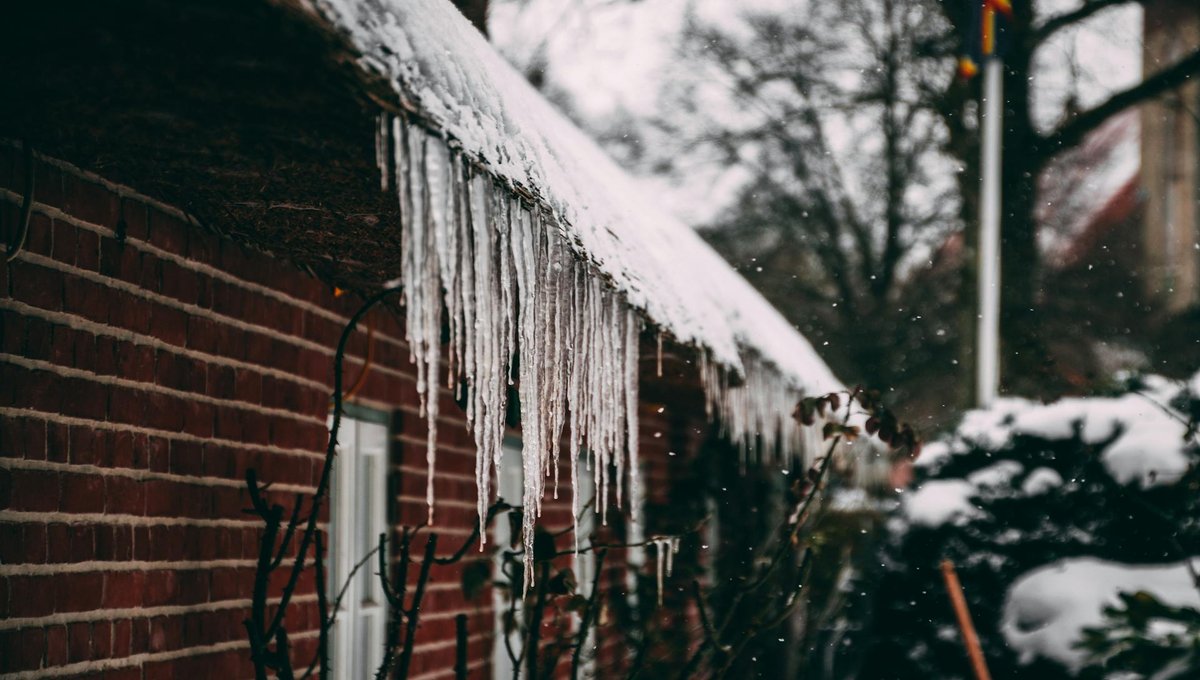Walking through a neighborhood on a chilly morning, you might notice some houses with frost-covered roofs, while others remain clear. This phenomenon often raises questions about whether frost on roof good or bad for your home. For homeowners, seeing frost forming can be an indication of a well-insulated attic, as the cold air above interacts with the warmth below. A frost-covered roof is often a sign that your home is equipped to handle the demands of winter, reflecting its ability to retain energy efficiency despite severe temperatures. However, the absence of frost or uneven frost patterns could point to underlying issues, such as inadequate insulation or specific conditions that allow heat to escape.
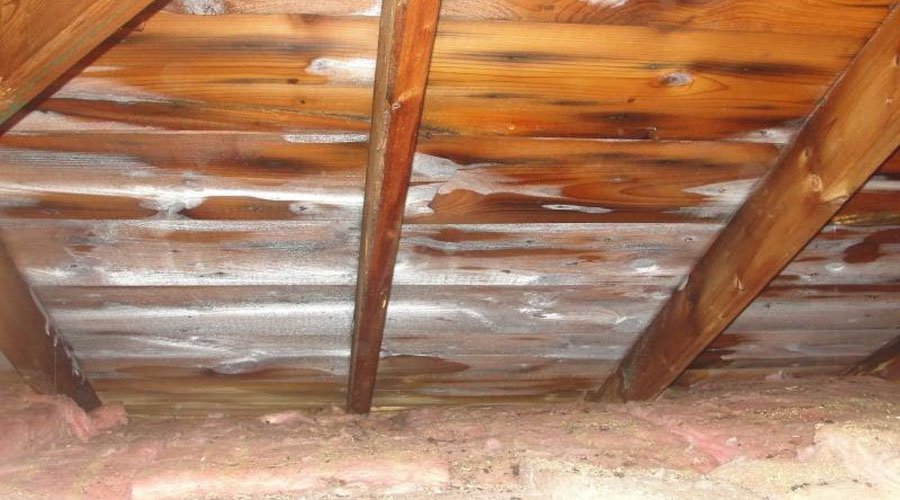
Living in the U.S., where winters bring heavy frosts and even snowfall, it’s important to keep your house and attic area properly insulated. Proper insulation not only helps with the efficiency of your home but also prepares it for the challenges of cooler months. As the transition from warm to cold weather begins, being observant of your roof and comparing it to your neighbors’ can provide valuable insight. If your roof lacks frost, it may mean heat is escaping, which wastes energy and leads to discomfort. Ensuring your attic insulation is in place will keep your house ready to handle winter’s severe conditions.
Is Frost on Your Roof a Problem?
On frosty mornings, many homeowners notice frost forming on their roofs and wonder if it’s good or bad. A frost-covered roof can be an indicator of a strong thermal barrier in the attic, meaning the heat is not escaping into the vented attic. This happens because the insulation keeps the living space warm while preventing the roof from warming up enough to melt the frost. However, if there’s no frost on your roof or spotty frost patterns, it could suggest a poorly insulated attic, allowing heat to escape through the roof deck, wasting energy, and preventing frost from forming. In such cases, folks need more attic insulation to maintain energy efficiency.
Vaulted Ceilings and Frost Issues
Homes with vaulted ceilings present unique challenges. These ceilings are often difficult or even impossible to access, as they are directly attached to the roof joists. Without proper ventilation and an installed baffle-system, warm air can escape into the roof structure, making it harder to maintain frost. Unlike vented attics, where sheetrock ceilings and insulation create a barrier, vaulted ceilings require extra effort to achieve the same results. When inspecting such spaces, always look for signs of warmed roof decks or areas where frost is missing.
During cold, humid conditions, a well-insulated home will naturally retain heat, while poorly insulated ones will lose warmth. This loss not only affects comfort but also creates problems like frost melting unevenly or completely. Melted frost can seep into the attic floor, leading to moisture issues and even damaging the roof over time. Proper attic insulation for humidity control can help reduce these risks and keep your home protected. If you observe frost, consider it an indicator of your home’s insulation performance and take steps to ensure it remains effective. Don’t assume everything is fine without looking closely for areas that may need attention.
In my experience, good attic insulation solves many winter challenges, including uneven frost patterns. For homes with vaulted ceilings or vented attics, ensuring proper insulation and ventilation is key to maintaining energy efficiency and preventing heat loss. Whether your roof shows frost or not, always be confident in assessing your home’s needs and make improvements as necessary. No one knows your house better than you, so staying proactive about insulation will save you time and money in the long run.
Frost Patterns: Understanding Frost Ghosting
Frost ghosting is a unique phenomenon that appears as narrow vertical striping of frost on your roof. This visual sign often indicates losing heat, as the lines where the frost has melted are areas where the rafter system is touching the roof sheathing on the inside. In stick-built homes, batt insulation is typically placed directly above the ceiling to keep conditioned air in the main living area. However, problems arise when the air seeps into the open attic space, warming the underside of the roof and melting the frost in between.
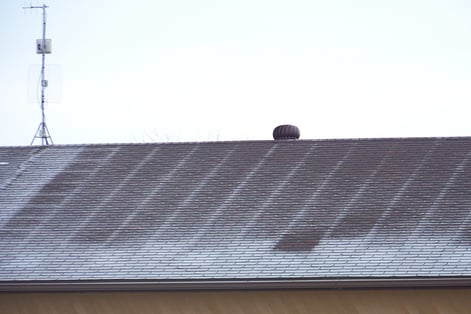
The interior insulation plays a critical role in maintaining proper roofing conditions. Without enough insulation, warm air heats the plywood, especially in thinner areas less than an inch-thick, causing the frost to melt unevenly. This explains why frost ghosting occurs in attics where the rafters butt against the roof, forming patterns that reveal insulation gaps. Proper insulation helps avoid these patterns and ensures a well-protected attic and home.
Issues with Stick-Frame Roofs
Stick-frame roofs often face problems during winter due to melting frost and the formation of ice dams. When the temperature drops below freezing, frost or snow can accumulate on the roof. As hot air rises from the house and warms the upper part of the roof, the snow melts and water runs down to the colder eave or edge, where it re-freezes, forming a ridge. Over time, this creates icicles, a clear byproduct of an ice dam. This process can lead to water seeping under shingles, causing leaks in the attic, and even damaging the drywall and insulation below.
These conditions encourage the growth of mold and rot, which can compromise the roof and affect the health of your family. Ensuring proper insulation and ventilation in stick-frame roofs is essential to prevent water freezing, melting, and subsequently damaging the structure. Without these precautions, the roof’s structural integrity and the home’s overall comfort can be significantly impacted.
Sunlight’s Effect on Frost Formation
The amount of sunlight a roof receives can significantly influence frost formation. Roofs that remain in shadows tend to retain frost longer, while those exposed to the sun may experience faster melting. When comparing frost patterns, this is an essential factor to consider. Areas with less exposure to sunlight are more likely to develop persistent frost, which can reveal underlying issues with insulation or ventilation.
Frost Inside the Attic: A Hidden Concern
Frost in the attic may seem like a benign sign, but its presence can be concerning. When moisture-laden air from the house rises and condenses on the exterior roof sheathing, it can lead to frost formation. While the frost itself is not immediately harmful, the potential damage begins when it melts, causing water issues, such as wet insulation, unsightly stains, and even mold growth. Over time, this can result in deteriorating sheathing, affecting the roof’s structural integrity and increasing repair costs. Proper insulation and ventilation are key to preventing these problems.
Also Read: What to Do If Attic Insulation Gets Wet?
Preventing Frost Issues
Prevention is key when it comes to frost forming in the attic. Homeowners should ensure their attic is well-insulated and focus on maintaining optimal humidity levels in the house. This approach can significantly reduce the chances of frost formation, keeping your home efficient and comfortable during colder months. Proper insulation and humidity control make a big difference in protecting your attic from frost-related problems.
Innovative Solutions with SIP Roofs
Using SIP panels for your roof provides a modern approach to managing frost and energy efficiency. Unlike stick-built homes, where ghosting and uneven frost patterns occur due to gaps in insulation, SIP roofs create a continuous thermal envelope. The panels are designed to fit together, reducing thermal bridges and ensuring that warm air stays inside the home, minimizing heat loss. This means the majority of the roof remains covered with frost, avoiding the uneven melting phenomenon seen in traditional designs. The builder works to integrate the foam core insulation directly into the roof, keeping the air conditioned and energy-efficient.
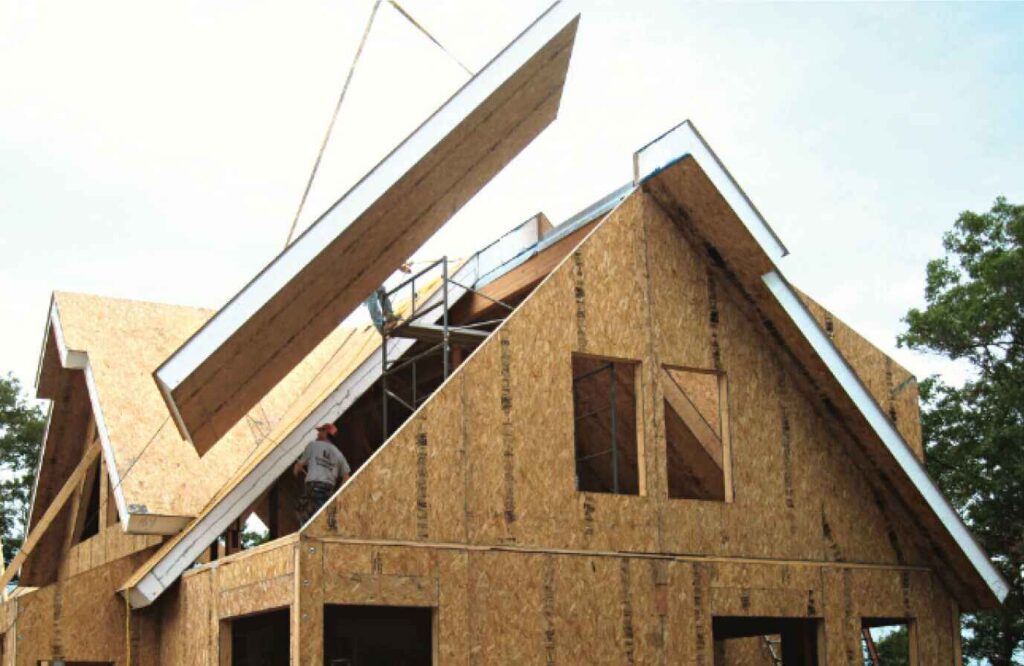
One major advantage of SIP roofs is their ability to prevent heat from rising and escaping. The panels act as a structural envelope, stopping heat loss in areas where stick-frame roofs often fail. Because the insulation is built into the roof itself, there is no need for additional layers between rafters. This approach eliminates the problems of seepage, melting, and energy waste commonly associated with traditional stick-frame roofs. By addressing these challenges with SIPs, homeowners can save energy, maintain consistent temperatures, and avoid the issues caused by poor insulation.
Final Thoughts
Frost on your roof is often a benign sign of effective insulation, but uneven or internal formation may indicate underlying issues. By understanding the implications of frost and taking preventive measures, homeowners can ensure the longevity of their roofs and the safety of their homes. If there’s any doubt, it’s wise to consult a reputable roofing company for expert advice and tailored solutions. Staying proactive protects both your home and your peace of mind.
FAQ
Is Frost on Your Roof a Good Thing?
Frost on your roof is often a benign sign of effective insulation, showing your home is retaining heat. However, uneven or internal formation may indicate underlying issues. Understanding its implications and taking preventive measures can help homeowners ensure the longevity of their roofs and the safety of their homes.
How Do I Know If My Roof Is in Good Condition?
7 Potential Signs That Your Roof May Need To Be Replaced
- Shingle edges are curled or shingle tabs are cupped.
- Bald spots where granules are missing.
- Cracked shingles.
- Your roof is at least 20 years old or looks old and worn.
- Your neighbors are getting new roofs.
- Dark streaks are visible.
- Moss is growing on the roof.
Why Do Some Roofs Have Frost and Others Don’t?
Frost on roofs often depends on the level of insulation. A lack of adequate insulation can indicate issues as it causes heat to leak into the attic, making frost melt unevenly. This results in spotty coverage or clean frost-free areas, which are clear signs of leaking heat. Proper insulation helps prevent these spots and maintains even frost patterns.
Is Frost in the Attic Bad?
Frost in the attic may seem harmless, but when it melts, it can cause serious damage. This includes wet insulation, deteriorated roof sheathing, and even mold growth. Over time, water stains may appear on the ceilings, highlighting the need for proper ventilation and insulation to prevent these issues.
